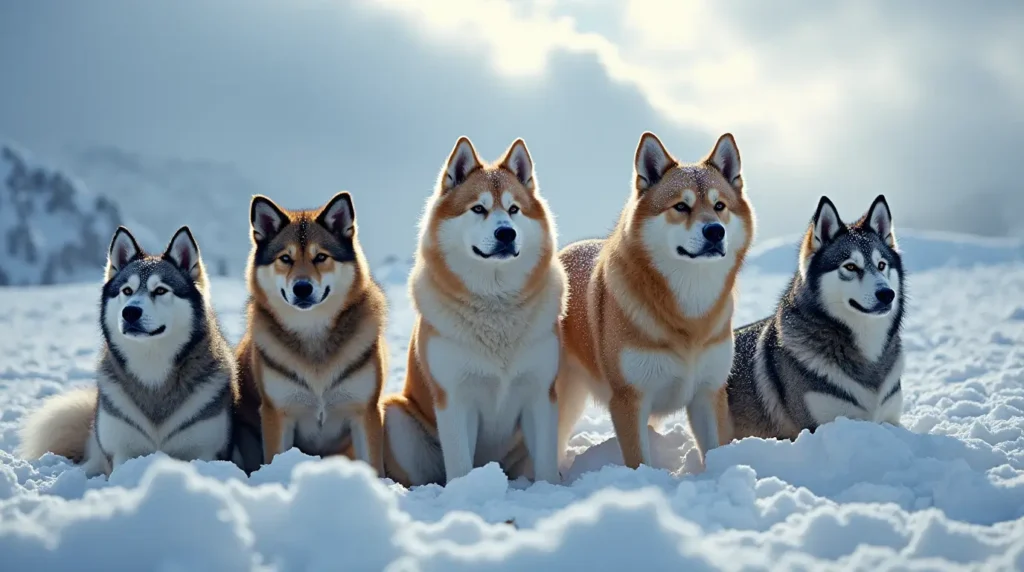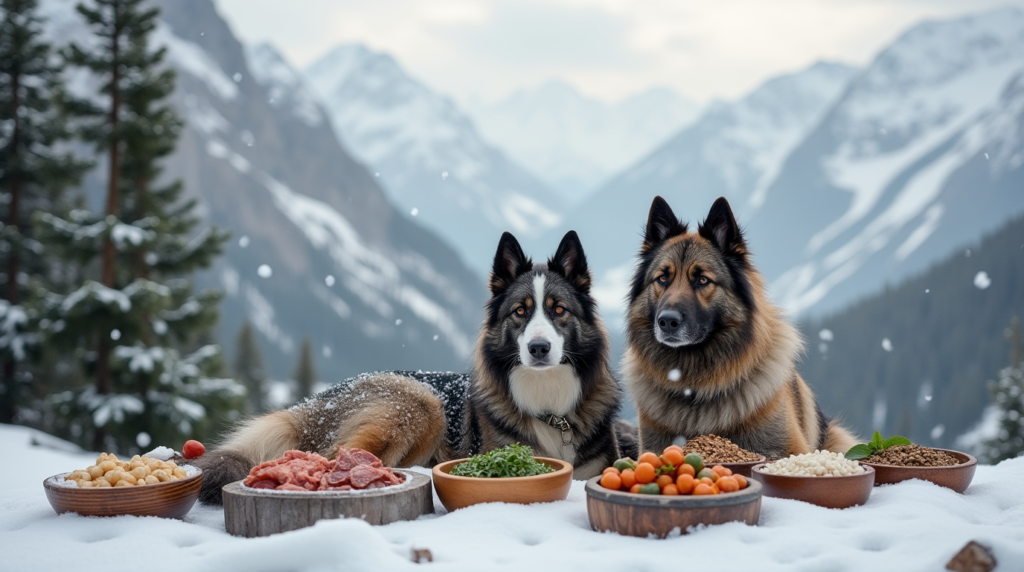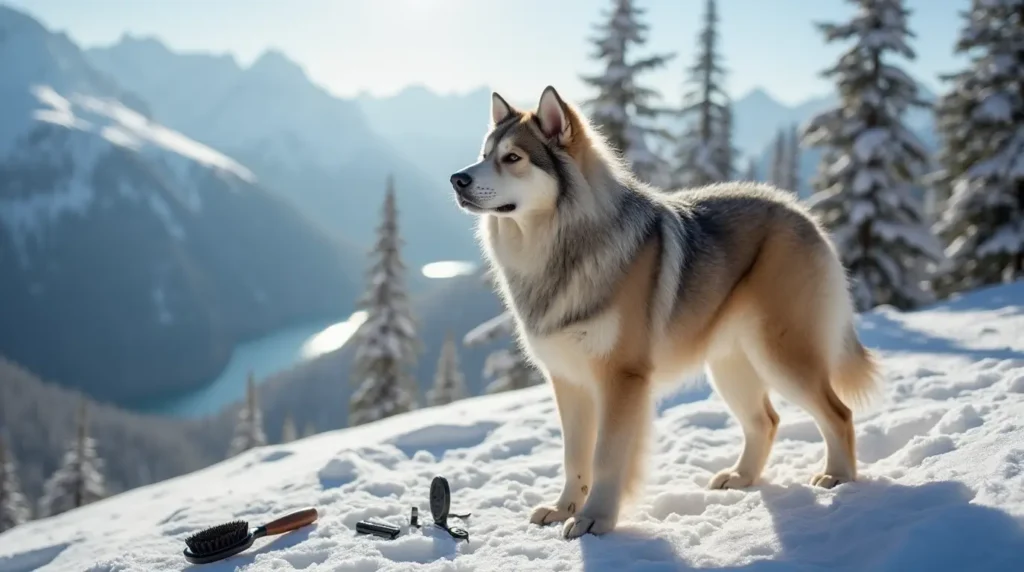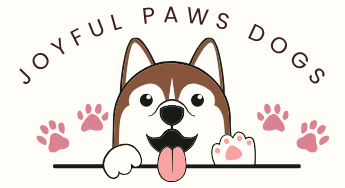If you own a dog and live in the Rocky Mountains, you might wonder about their weather tolerance. rocky Mountain Dogs, with their thick coats and strong bodies, are built for harsh mountain weather. About 60% of dog owners take their pets hiking monthly, showing how much people love outdoor adventures with their pets.
Table of Contents
These dogs were made for the high mountains of the Rockies. They need special care when you’re out exploring. We’ll share tips on keeping your Colorado Mountain Dog safe in extreme weather.
Introduction to Colorado Mountain Dogs
Thinking about getting a loyal companion or farm dog? The Colorado Mountain Dog might be perfect. Wendy Francisco created this breed in the 1990s by mixing Great Pyrenees and Anatolians. It’s known for being both gentle and protective. If you’re searching for colorado dog breeders, make sure to find the right one for you.
Colorado Mountain Dogs are very loyal and loving to their families. They have a thick coat, strong build, and a gentle nature. This makes them great for families and farms. They can grow up to 34 inches tall and need regular exercise to stay healthy.
Curious about this breed? Check out the 10 Amazing Benefits of Owning a Colorado Mountain Dog
Origin and Breeding Background
The Colorado Mountain Dog was bred to be both gentle and protective. It started with a mix of Great Pyrenees and Anatolians. Now, many colorado dog breeders specialize in this breed. The Colorado Mountain Dog Association also has a registry to ensure breed standards.
Physical Characteristics
Colorado Mountain Dogs have a thick double coat and a strong build. They are also known for being outgoing and confident. If you want a loyal and affectionate dog, the Colorado Mountain Dog is a great choice.
Here is a table summarizing some key characteristics of the Colorado Mountain Dog breed:
| Characteristic | Description |
|---|---|
| Height | Up to 34 inches |
| Activity Level | Low to medium |
| Temperament | Gentle, loyal, and affectionate |
Adaptations for Cold Weather
As a owner of large mountain dog breeds, you might wonder how they handle cold weather. Their thick double coat keeps them warm in freezing temperatures. Their size and muscle also help them stay warm, making them perfect for the Rocky Mountains.
Some key adaptations of large mountain dog breeds include:
- A thick double coat that provides excellent insulation
- A large size and muscular build that helps to conserve heat
- Behavioral adaptations, such as seeking shelter and reducing activity in extreme cold
Dogs can also face health issues at high altitudes, like less oxygen and temperature changes. As a responsible owner, it’s crucial to keep your dog safe in cold weather. This includes regular vet visits and preventing frostbite and hypothermia.
Understanding your dog’s adaptations and taking care of their health ensures they can handle cold weather well. This way, your Colorado canine companions can thrive even in the chilliest conditions.
Coping with Heat and Humidity
As a responsible owner of a colorado mountain dog, it’s key to think about heat and humidity, especially in summer. These dogs are great in cold weather but can still face heat issues. It’s important to make sure they drink enough water and stay in the shade to avoid heat exhaustion.
When searching for mountain dogs for sale, remember their specific needs, especially in heat and humidity. Colorado mountain dogs need cool, well-ventilated spots to avoid getting too hot. With the right care, owners can help their dogs handle the heat and humidity.
Here are some tips to keep your colorado mountain dog safe in hot weather:
- Make sure they always have access to fresh water.
- Give them shade and cool, well-ventilated areas.
- Don’t walk them on hot surfaces, especially when the sun is strongest.
By following these tips, you can keep your colorado mountain dog safe and healthy during the hot summer months.
Ideal Living Conditions
When it comes to your rocky mountain dogs, their living conditions are key. As mountainous dog breeds, they need a special environment to thrive. Make sure they have large, securely fenced areas for exercise and play.
The climate and altitude of your area matter a lot. rocky mountain dogs are great for high altitudes and cold weather. But, they need lots of outdoor space to roam and play.
Some key considerations for ideal living conditions include:
- Providing a large, securely fenced area for exercise and play
- Ensuring access to plenty of fresh water and shade
- Considering the climate and altitude of your area
By providing the right living conditions, you can help your rocky mountain dogs live happy and healthy lives. As a responsible owner of mountainous dog breeds, it’s crucial to prioritize their needs. Make sure they have the space and environment they require to thrive.
Remember, every dog is unique, and their individual needs may vary. But with the right living conditions and care, your rocky mountain dogs can enjoy a long and happy life as part of your family.
| Factor | Consideration |
|---|---|
| Outdoor Space | Large, securely fenced area |
| Climate | High altitudes and cold weather |
| Altitude | Access to plenty of fresh water and shade |
Exercise Needs in Varying Weather
As a responsible dog owner, you want your Colorado Mountain Dog to be happy and healthy. Regular exercise is key for their well-being. It’s important to adjust their activities based on the season.
In winter, you can play with your dog indoors or go snowshoeing or sledding outside. In summer, make sure your dog has cool, well-ventilated places to avoid overheating.
Colorado dog breeders suggest starting with short, gentle exercises. Then, gradually increase the intensity and duration as your dog gets more comfortable.
Managing Winter Activities
Winter activities need to be safe for your dog. You can build a snowman or go on a winter hike together. Always watch for signs of exhaustion or stress in your dog.
Summer Playtime Safety
In summer, keeping your dog cool and hydrated is essential. Provide fresh water and engage in activities like swimming or playing in a sprinkler. As best mountain dogs need regular exercise, aim for at least 60 minutes of vigorous activity daily.
By following these tips, you can keep your Colorado Mountain Dog happy and healthy, no matter the weather. Always put your dog’s safety and well-being first. If you have concerns about their exercise needs, talk to a vet.
Signs of Weather-Related Stress
As a responsible owner of large mountain dog breeds, such as those found among Colorado canine companions, it’s essential to recognize the signs of weather-related stress. Dogs can experience stress due to extreme temperatures, humidity, and other environmental factors. This can lead to heat exhaustion or hypothermia.
Heat exhaustion in dogs can be identified by excessive panting, drooling, and lethargy. If you notice these symptoms, it’s crucial to provide a cool, shaded area for your dog to rest. Also, ensure access to fresh water. On the other hand, hypothermia can cause shivering, weakness, and pale gums. In both cases, seeking veterinary attention immediately is vital to prevent further complications.

- Excessive panting or drooling
- Lethargy or weakness
- Shivering or pale gums
- Changes in appetite or water intake
By being aware of these signs and taking prompt action, you can help your Colorado canine companions stay safe and healthy, even in extreme weather conditions. Remember, large mountain dog breeds require special care and attention to their unique needs, especially when it comes to weather-related stress.
Tools for Extreme Weather Care
As a responsible owner of a colorado mountain dog, it’s key to have the right tools. These ensure your pet’s comfort and safety in extreme weather. Whether you’re searching for mountain dogs for sale or already have one, preparation is crucial.
For cold weather, coats and boots can provide insulation and protection. You can also use paw wax or boots to shield your dog’s paws from ice melt chemicals.
On hot days, cooling products like pads and vests can help keep your dog cool. It’s also vital to offer plenty of fresh water and shade. This prevents heat exhaustion.
Some essential tools for extreme weather care include:
- Coats and boots for cold weather
- Paw wax or boots for protection from ice melt chemicals
- Cooling pads and vests for hot days
- Plenty of fresh water and shade
With these tools and precautions, you can help your colorado mountain dog stay comfortable and safe. Always prioritize your pet’s health and well-being. If you have concerns, consult with a veterinarian.
| Tool | Purpose |
|---|---|
| Coats and boots | Provide insulation and protection from cold weather |
| Paw wax or boots | Protect paws from ice melt chemicals |
| Cooling pads and vests | Help keep dogs cool on hot days |
Nutrition for Weather Resilience
As a responsible owner of rocky mountain dogs or mountainous dog breeds, you know how vital a balanced diet is. It keeps your pet healthy and ready for extreme weather. In winter, you should up their calorie and nutrient intake to keep them energized.
Supplements like joint supplements are also good for your dog’s health. Rocky mountain dogs, with their large size and high energy, often face joint issues. A well-fed dog can better handle cold winters or hot summers. Right nutrition and care help your dog stay healthy and thrive in any weather.
Some key considerations for nutrition include:
- High-quality protein sources to support muscle health
- Complex carbohydrates for sustained energy
- Essential fatty acids for skin and coat health
Always talk to your vet to find the best diet for your dog. They can help you make sure your rocky mountain dogs or mountainous dog breeds stay healthy, happy, and resilient in any weather.

| Nutrient | Importance | Recommended Intake |
|---|---|---|
| Protein | Muscle health and growth | 25-30% of daily calories |
| Fat | Energy and skin health | 15-20% of daily calories |
| Carbohydrates | Energy and fiber | 40-50% of daily calories |
Training and Socialization
As a dog owner, you want your Colorado Mountain Dog to be well-trained and socialized. This is vital for colorado dog breeders who aim to raise best mountain dogs. Early training with positive reinforcement is key to good behavior and social skills.
Introducing your dog to different people, animals, and places is crucial. This includes various human visitors, animals like poultry and pigs, and different environments. Proper training and socialization make your dog a well-behaved and well-adjusted companion.
Some key aspects of training and socialization include:
- Positive reinforcement techniques for behavior modification
- Basic cues and obedience training
- Socialization with various animals and people
- Exposure to different environments and situations
Investing time and effort in training and socializing your dog is essential. It helps them become a valued family member. With the right training, your dog can handle various situations, making them a great choice for active families.
Training and socialization are ongoing, requiring patience, consistency, and positive reinforcement. Working with reputable colorado dog breeders and using proven methods helps your best mountain dogs reach their full potential. They become loving and loyal companions.
| Training Program | Duration | Outcome |
|---|---|---|
| Puppy Training | 12 weeks | Foundational training and personality suitability |
| Obedience Training | Variable | Improved communication between dog and owner |
| Specialty Classes | Variable | Certification options for dog owners |
Grooming Tips for Seasonal Changes
If you own a large mountain dog breed, like those in Colorado, grooming is key. It keeps your dog healthy and comfortable. Regular grooming stops matting, reduces shedding, and keeps their coat clean.
In winter, use brushes and combs to avoid matting. Also, trim your dog’s nails to stop overgrowth and cracking. In summer, manage their coat to avoid overheating. Use cool, well-ventilated spots to keep them comfy.

- Brush your dog’s coat at least once a week to manage shedding
- Trim your dog’s nails regularly to prevent overgrowth
- Use cool, well-ventilated areas to prevent overheating in the summer
- Provide regular baths, depending on your dog’s activity level and breed
By following these grooming tips, you can keep your large mountain dog breeds, like Colorado canine companions, healthy and comfortable all year.
Regular Veterinary Care Practices
As a responsible owner of a colorado mountain dog, regular vet care is key. Colorado has over 1,900 vets, making it easy to find help. Regular vet visits can catch problems early, preventing bigger issues.
When looking for mountain dogs, choose a reputable breeder. They ensure health and well-being. All breeding females and studs are vet-checked and OFA certified. Puppies get vet checks, microchips, and first shots before they go home.
To keep your colorado mountain dog healthy, consider these tips:
- Schedule regular vet visits
- Keep vaccinations up-to-date, considering your area’s climate and altitude
- Watch for signs of illness or stress in your dog
Regular vet care helps your dog stay healthy, even in extreme weather. Work with your vet to ensure your dog gets the best care. Always put your dog’s health first.
| Veterinary Care | Frequency | Importance |
|---|---|---|
| Regular check-ups | Every 6-12 months | High |
| Vaccinations | As recommended by your veterinarian | High |
| Monitoring behavior and health | Ongoing | High |
Owner Responsibilities in Extreme Conditions
As a Rocky Mountain dog owner, keeping your pet safe is key, especially in harsh weather. Being ready and proactive helps a lot. Make an emergency plan and have essential items like extra food, water, and first-aid kits.
Preparing for Emergencies
Watch your Rocky Mountain dog for signs of weather stress. Quick action is crucial for their safety. Know the signs of heat exhaustion and hypothermia and be ready to act fast.
Best Practices for Monitoring Health
Keeping an eye on your rocky mountain dogs health is vital. Regular vet visits are important. This ensures they get the care they need for the local climate.
Learn more about the Colorado Mountain Dog on WagWalking

